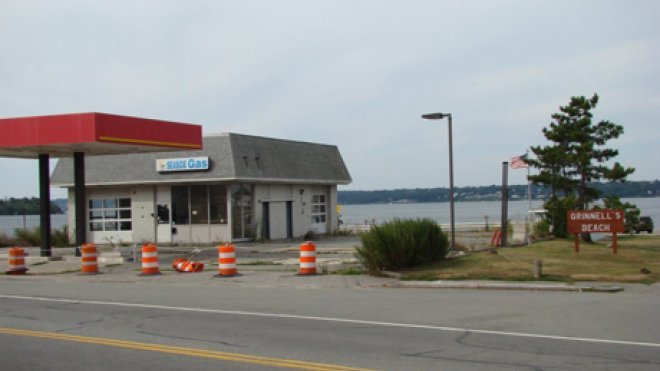With an Assist from RWU, Tiverton to Launch Visioning Process at Stone Bridge
Students from Community Partnerships Center will base redevelopment scenarios for former gas station on input from Tiverton residents, officials

TIVERTON, R.I. – In a collaborative undertaking to launch this month, the Town of Tiverton will join forces with students and faculty from Roger Williams University to lead a community visioning and design process for the former gas station located in the historic Stone Bridge village.
A team of students taking part in a summer course titled Community Engaged Design will take on the project, which was identified through an application from the Town of Tiverton to the University’s Community Partnerships Center. With more than 100 projects in just three years since its launch, the CPC offers specialized expertise to assist nonprofits and municipalities in solving challenges, while allowing students to gain real-world experience.
The Town of Tiverton acquired the former gas station in February and asked the CPC to help create a community-wide discussion on the options for reusing the structure or demolishing it in order to replace with open space or other public facilities.
“Our waterfront is a precious thing and is for the enjoyment of all the people of Tiverton, which is why I believe our people should have a voice in how it will look,” says Tiverton Town Council President Edward A. Roderick. “Their input will set the tone for enhancing this area, not only for today but for future generations as well.”
The process will welcome all ideas from the community, including those that integrate and improve the existing Town-owned Grinnell’s Beach and the historic Stone Bridge abutment, which is scheduled for rehabilitation in 2015. Through community visioning, options for all Town-owned properties in the area can be explored, and a direction for action can be determined.
The Roger Williams students will engage the community in a structured visioning and option-exploration process and use the input to create various scenarios for redevelopment of the gas station parcel, within both funding and regulatory restrictions. The CPC-developed scenarios will then be brought to the public for feedback through a variety of methods including workshops, charrettes, online tools and more.
Community Partnerships Center Director Arnold Robinson says the course, which runs from May to July, will push the students – a combination of architecture, historic preservation and community development majors – to bring knowledge gained in the classroom to a project with real-world implications.
“This course will challenge our students to apply what they have learned about design and sustainability, drawing and computer-modeling, how to work with clients and how to use academic knowledge to help the community to choose the path that best suits their shared vision for the site.”
Roderick noted that the direction selected for this property can set the tone for redevelopment in the Stone Bridge village: “This will begin the process for a new focal point in our town and showcase our waterfront. This will only make our town more beautiful.”